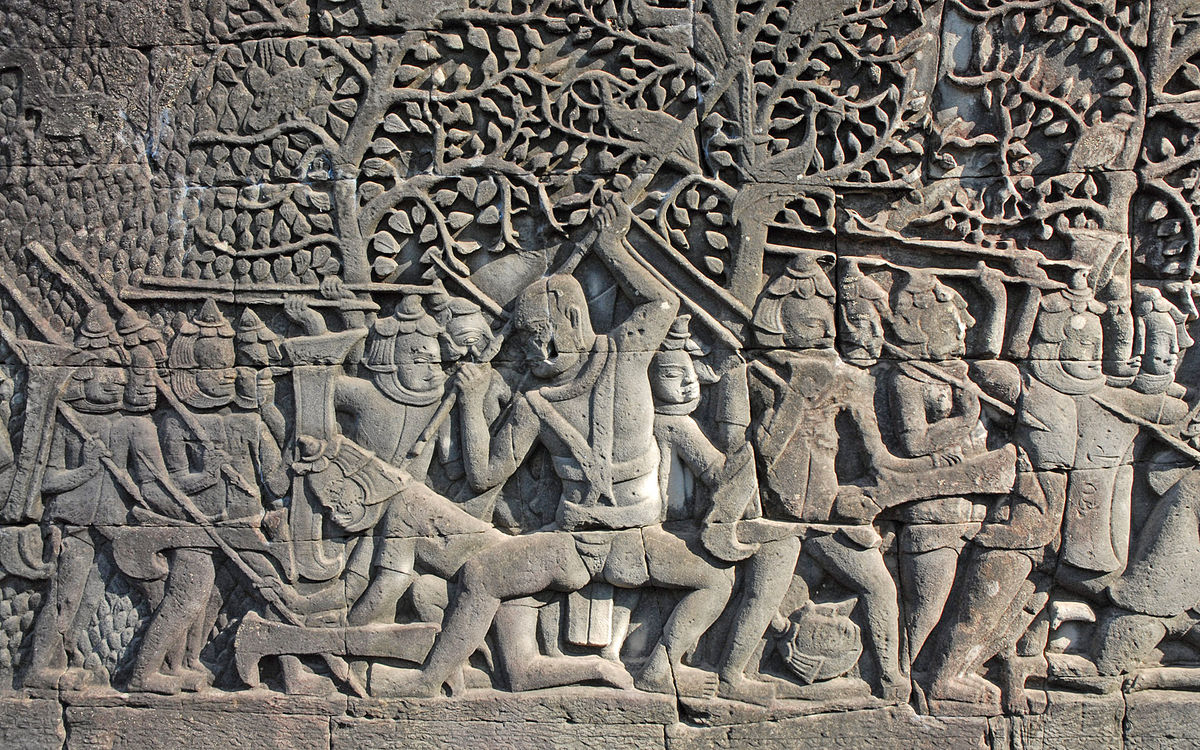
Champa
Trà Kiệu, Quảng Nam, VietnamChampa was a collection of independent Cham polities that extended across the coast of what is present-day central and southern Vietnam from approximately the 2nd century CE until 1832. According to earliest historical references found in ancient sources, the first Cham polities were established around the 2nd to 3rd centuries CE, in the wake of Khu Liên's rebellion against the rule of China's Eastern Han dynasty, and lasted until when the final remaining principality of Champa was annexed by Emperor Minh Mạng of the Vietnamese Nguyễn dynasty as part of the expansionist Nam tiến policy.[73] The kingdom was known variously as Nagaracampa, Champa in modern Cham, and Châmpa in the Khmer inscriptions, Chiêm Thành in Vietnamese and Zhànchéng in Chinese records.[74]
Early Champa evolved from the seafaring Austronesian Chamic Sa Huỳnh culture off the coast of modern-day Vietnam. Its emergence in the late 2nd century CE exemplifies early Southeast Asian statecraft at a crucial stage of the making of Southeast Asia. The peoples of Champa maintained a system of lucrative trade networks across the region, connecting the Indian Ocean and Eastern Asia, until the 17th century. In Champa, historians also witness the first native Southeast Asian literature being written down in native language around c. 350 CE, predating first Khmer, Mon, Malay texts by centuries.[75]
The Chams of modern Vietnam and Cambodia are the major remnants of this former kingdom. They speak Chamic languages, a subfamily of Malayo-Polynesian closely related to the Malayic and Bali–Sasak languages that is spoken throughout maritime Southeast Asia. Although Cham culture is usually intertwined with the broader culture of Champa, the kingdom had a multiethnic population, which consisted of Austronesian Chamic-speaking peoples that made up the majority of its demographics. The people who used to inhabit the region are the present-day Chamic-speaking Cham, Rade and Jarai peoples in South and Central Vietnam and Cambodia; the Acehnese from Northern Sumatra, Indonesia, along with elements of Austroasiatic Bahnaric and Katuic-speaking peoples in Central Vietnam.[76]
Champa was preceded in the region by a kingdom called Lâm Ấp, or Linyi, that was in existence since 192 CE; although the historical relationship between Linyi and Champa is not clear. Champa reached its apogee in the 9th and 10th centuries CE. Thereafter, it began a gradual decline under pressure from Đại Việt, the Vietnamese polity centered in the region of modern Hanoi. In 1832, the Vietnamese emperor Minh Mạng annexed the remaining Cham territories.
Hinduism, adopted through conflicts and conquest of territory from neighboring Funan in the 4th century CE, shaped the art and culture of the Cham Kingdom for centuries, as testified by the many Cham Hindu statues and red brick temples that dotted the landscape in Cham lands. Mỹ Sơn, a former religious center, and Hội An, one of Champa's main port cities, are now World Heritage Sites. Today, many Cham people adhere to Islam, a conversion which began in the 10th century, with the ruling dynasty having fully adopted the faith by the 17th century; they are called the Bani (Ni tục, from Arabic: Bani). There are, however, the Bacam (Bacham, Chiêm tục) who still retain and preserve their Hindu faith, rituals, and festivals. The Bacam is one of only two surviving non-Indic indigenous Hindu peoples in the world, with a culture dating back thousands of years. The other being the Balinese Hindus of the Balinese of Indonesia.[73]
